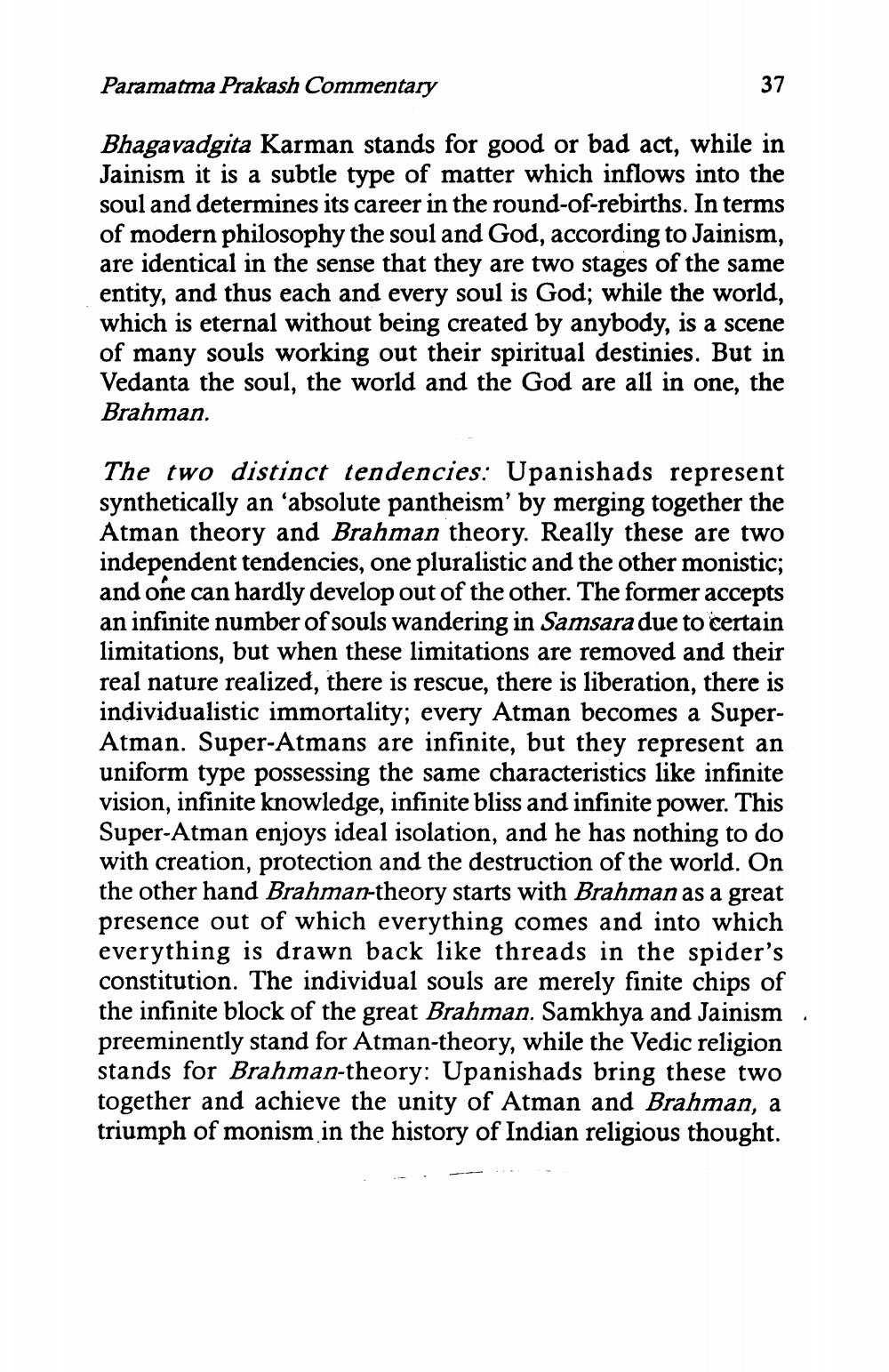________________
Paramatma Prakash Commentary
Bhagavadgita Karman stands for good or bad act, while in Jainism it is a subtle type of matter which inflows into the soul and determines its career in the round-of-rebirths. In terms of modern philosophy the soul and God, according to Jainism, are identical in the sense that they are two stages of the same entity, and thus each and every soul is God; while the world, which is eternal without being created by anybody, is a scene of many souls working out their spiritual destinies. But in Vedanta the soul, the world and the God are all in one, the Brahman.
37
The two distinct tendencies: Upanishads represent synthetically an 'absolute pantheism' by merging together the Atman theory and Brahman theory. Really these are two independent tendencies, one pluralistic and the other monistic; and one can hardly develop out of the other. The former accepts an infinite number of souls wandering in Samsara due to certain limitations, but when these limitations are removed and their real nature realized, there is rescue, there is liberation, there is individualistic immortality; every Atman becomes a SuperAtman. Super-Atmans are infinite, but they represent an uniform type possessing the same characteristics like infinite vision, infinite knowledge, infinite bliss and infinite power. This Super-Atman enjoys ideal isolation, and he has nothing to do with creation, protection and the destruction of the world. On the other hand Brahman-theory starts with Brahman as a great presence out of which everything comes and into which everything is drawn back like threads in the spider's constitution. The individual souls are merely finite chips of the infinite block of the great Brahman. Samkhya and Jainism preeminently stand for Atman-theory, while the Vedic religion stands for Brahman-theory: Upanishads bring these two together and achieve the unity of Atman and Brahman, a triumph of monism in the history of Indian religious thought.




